NEW SEASON, SAME CHALLENGES
June 16th has come and gone and, as usual, it’s far too hot!
The rivers and lakes are low, clear and weedy. Great for fish spotting, not so good for catching them. During the heat of the day most specimen fish are lethargic and shy, choosing to tuck themselves away under cover, resting from the intensity of the sun and hiding from whatever may be able to spot them in the crystal water
Feeding spells are short, often falling in those classic times just before and after the advent of the sun. This being the case, there’s no need for you to be there for much longer. We all have busy lives these days and getting out on the bank can seem on occasion like an impossibility. Long days and short windows can give you the perfect opportunity to take advantage though
With minimal kit and maximum preparation you can be out on the bank regularly, just a few hours at a time, and be rewarded with those special catches that can elude those fishing ‘business hours’.
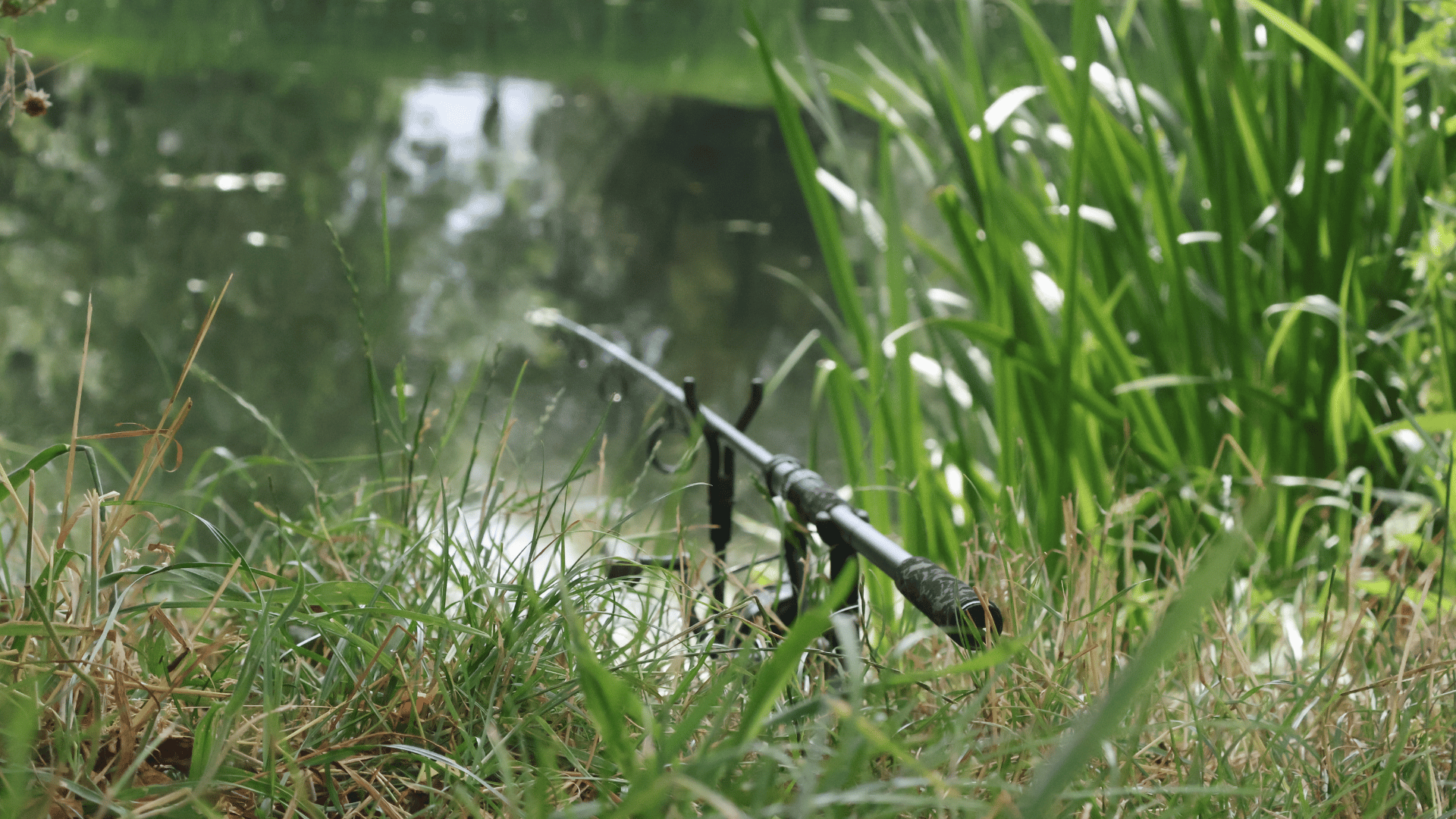
WHAT ARE WE TARGETING?
You might be a species specific specialist but the tactics we’re using here can be used for any and all larger specimens on both rivers and lakes; think barbel, bream, carp, chub, tench. I’ve spent many years focusing my efforts on one at a time but these days prefer the chance to just catch special fish, and don’t limit myself by getting too attached to any species in particular
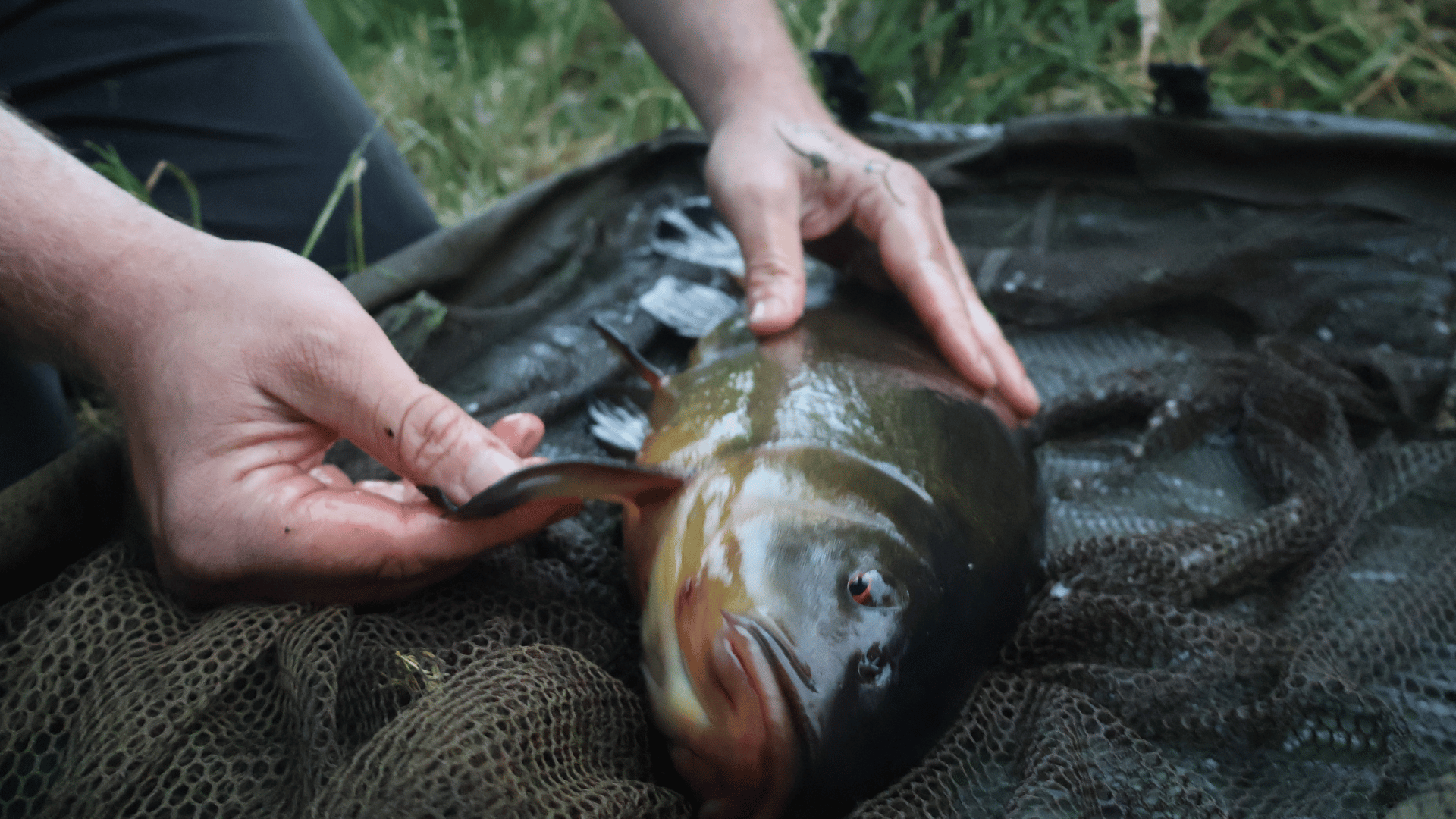
Tough as it can be, summer fishing can be very rewarding. The banks are green and at their best, the backdrops are great and the fish are visible and feeding
LESS IS MORE
The absolute key here is that every part of the setup must be kept to an absolute minimum, easy to chuck in the car, light enough to carry easily and simple enough to make the most of opportunities
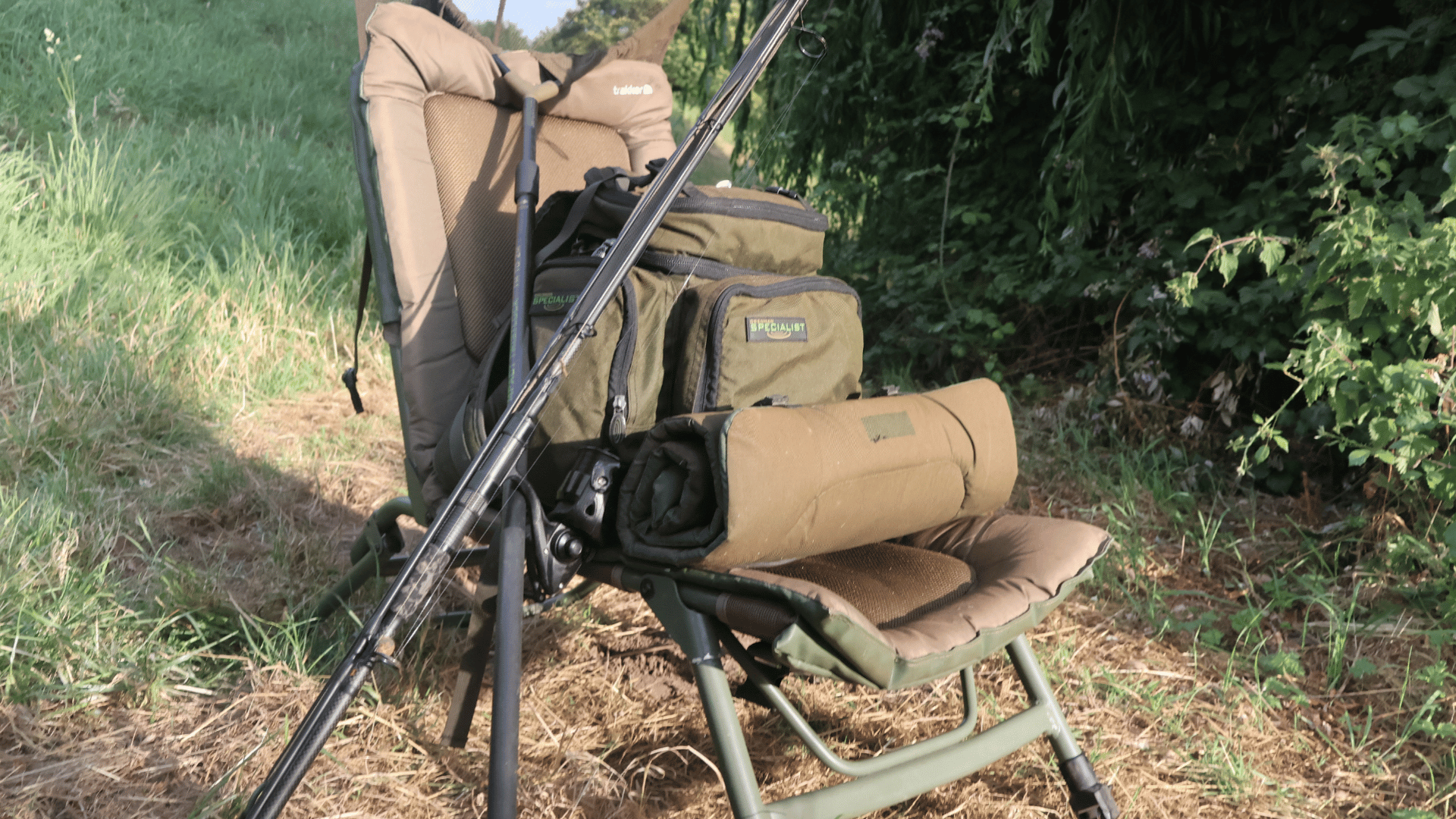
The tactics might seem very general but the reasoning behind some of the choices is very specific; simple, strong, efficient and effective. We’re not talking refined here, the first thing I’ll use is one of my favourite rods, an 8ft 2lb specimen rod. Short enough to fit anywhere (including the car) but strong enough to land basically any fish you’re likely to hook.
To this I’ll add a 4-5000 size reel loaded with strong, tough mono, usually around 12lb BS. This time of year the water has as many snags and hazards as it will have at any time and you don’t want to lose a fish because you went light.
Often anglers will scale down in the thought that lighter lines will get more bites in clear conditions, maybe a carry over from tough, biteless winter leagues. I’ve never found this to be true when specimen fishing and actually think many fish can be more comfortable with what they can see than what they can’t.
In a similar vein, to this I’ll add 3ft of leadfree leader. Not only does this add to the abrasion resistance, the soft and supple material is much closer to the texture of weed and plant life found in the underwater environment than wiry nylon. I remember seeing some of the fantastic work done by Bob Roberts for Barbel Days and Ways (long before everyone had a GoPro) and being shocked to see the fish fleeing the swim after contact with mono and fluorocarbon, while happily feeding with braided rigs hanging over their noses and around their fins. It’s stuck with me ever since.
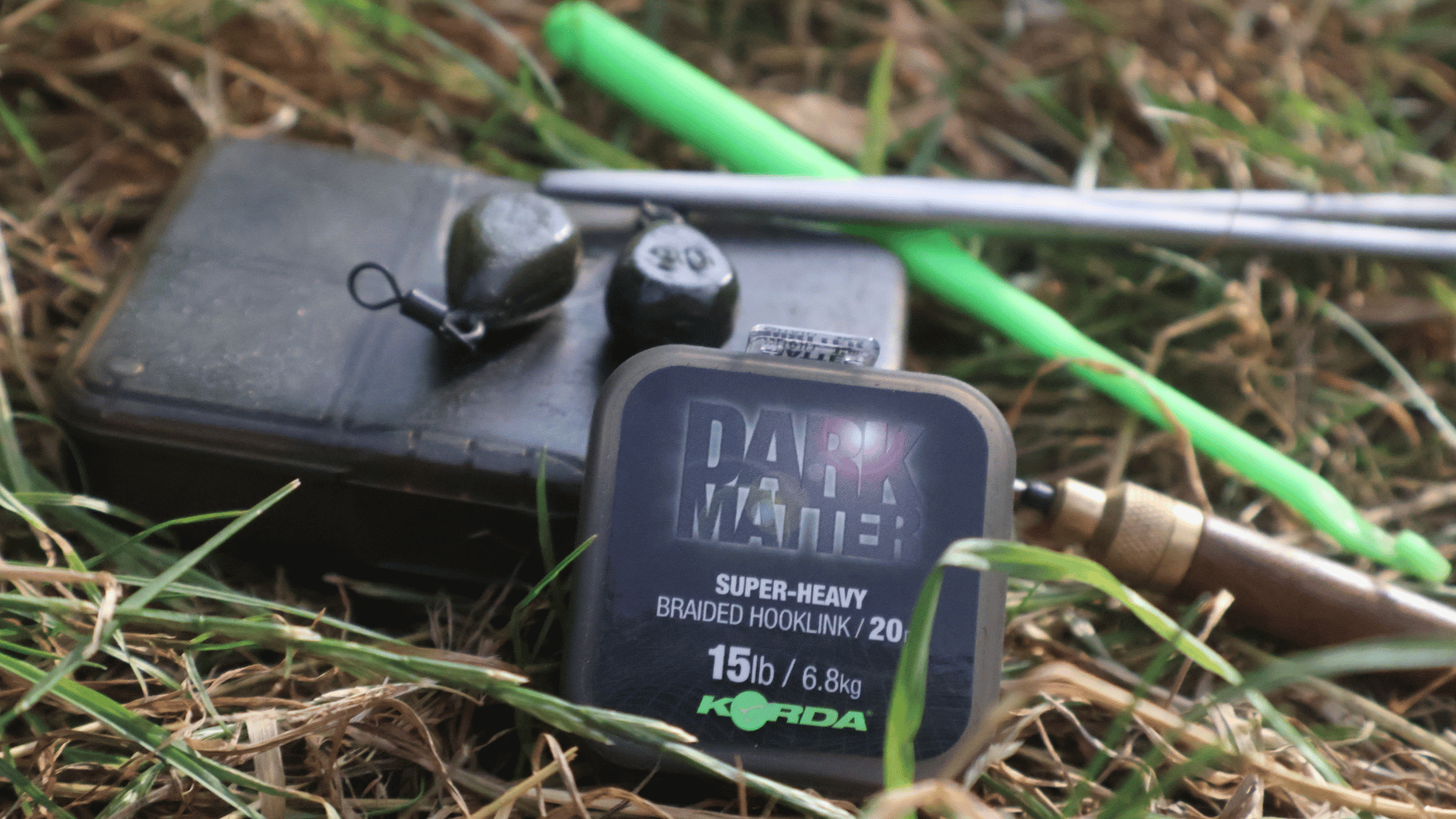
It’ll come as no surprise, then, that the hooklink comprises good old fashioned braid, strong and supple. What might be surprising though is the length. There’s a myth about river fishing, especially for barbel, that hooklinks have to be long and unwieldy, anywhere from 18 inches to 3ft plus. Tactics such as this become the norm while barely anyone remembers why. In fast flowing rivers while fishing feeders this is designed so as when the bait washes out and downstream it lands somewhere near the hookbait. In any other circumstance, there is little logic to it and all it does is make casting harder.
My rigs tend to be no longer than 6-8 inches, and very simply knotless knotted to a strong size 8 curve shank hook. The lead arrangement is a simple running rig and buffer bead, but I’ll terminate this in a ring swivel. Continuing the theme of being specific, uncoated braid does have a reputation for tangles and the ring swivel allows the rig to ‘helicopter’ in flight rather than flying back towards the lead and getting wrapped.
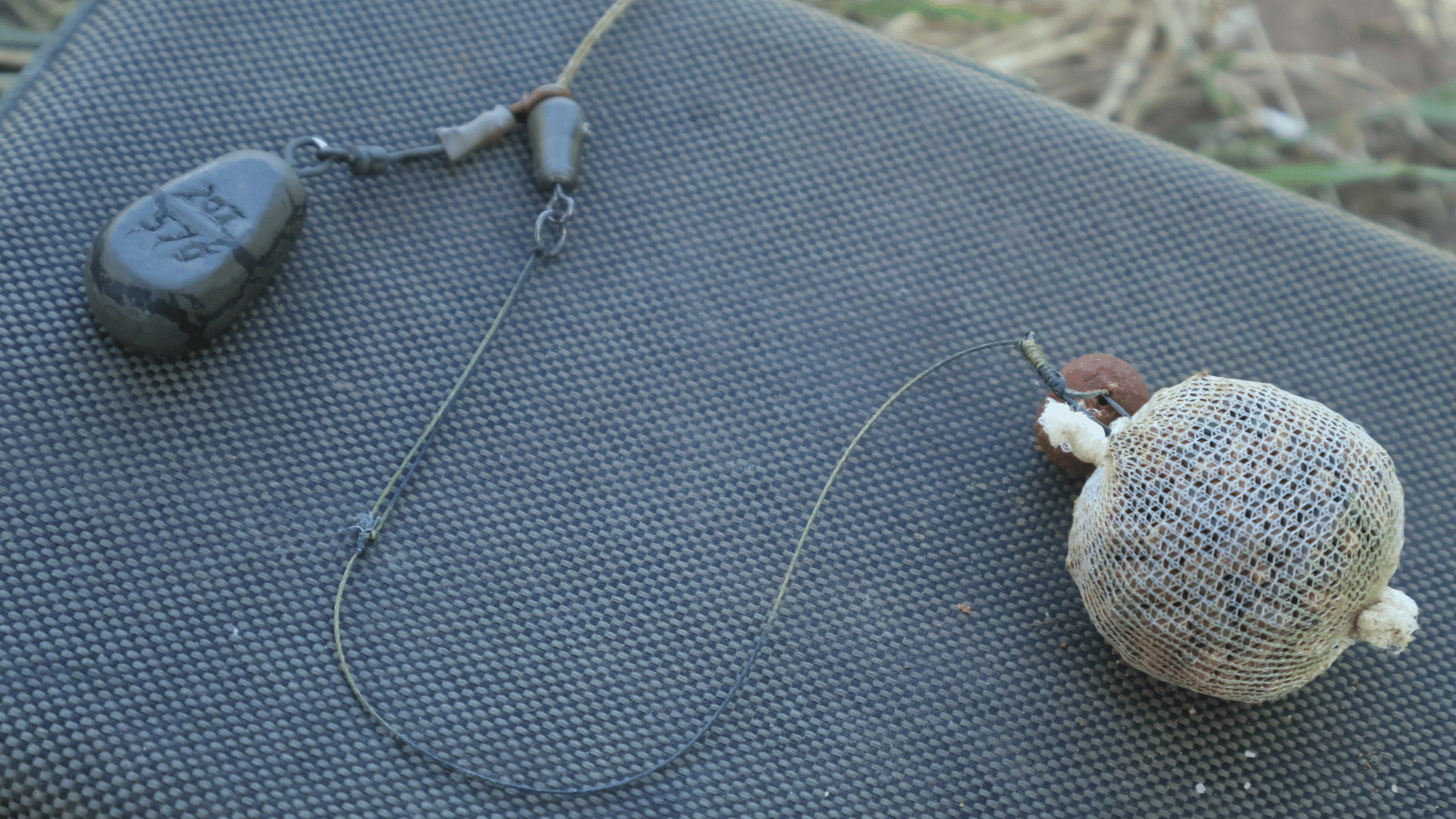
Tackle doesn’t really get simpler than this. I’ll add a lightweight chair (maybe), landing net, unhooking mat, bankstick and a bag of bits for rig making. Don’t forget to bring a bottle of water and DEFINITELY don’t forget the polaroids. Spotting fish at this time of year in the margins or watching them roll at first and last light can be the difference between success and failure on short sessions. There are times I think I’d rather forget the rod than the lenses. At least with the lenses I’ll learn something.
LIGHT BITES
There’s a reason there’s a whole section on the pub menu for these in the summer; no one wants to eat too much all in one go but you can definitely be tempted by a quick snack. No different for the fish. All we’re going to use is a single hookbait and a PVA bag of pellets
Whether we’re on a river or lake we’re talking short range margin fishing here, close to the bank with the fish in full view so I’ve got another crazy conspiracy theory tip for you that might be counter to the norm; I am absolutely convinced that straight-out-the-bag hookbaits with natural additives catch more fish than bright or overpowered ones. Fishing singles or bags often gets people reaching for the fluoros or super glugged specials. I’m a strong believer that when fish are close and their guard is up, the more normal and innocuous the bait, the better. I’ve done side by side A/B tests on this and the results speak for themselves. YMMV.
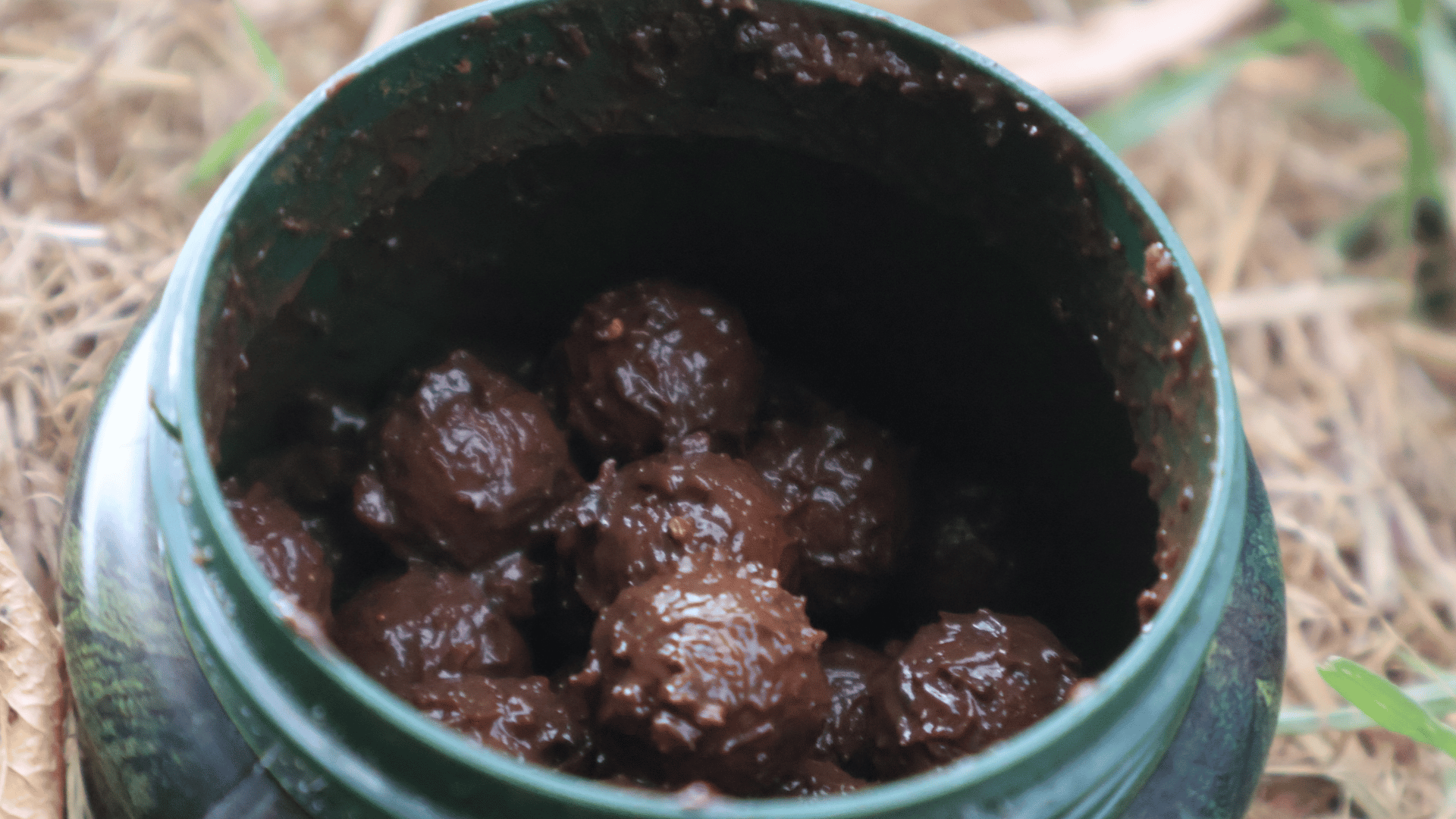
There aren’t many better feed baits in summer than pellets and I like to fill my mesh bag with a mix of smaller sizes, usually 2mm and 4mm of various varieties (I just build a bucket of mixed pellets over time). These provide the perfect grubbing parcel, keeping the fish in the swim just long enough to find the hookbait sat in the middle. A small mesh bag, nicked on the hook, is plenty of attraction to get a bite, while leaving your hookbait as the cherry.
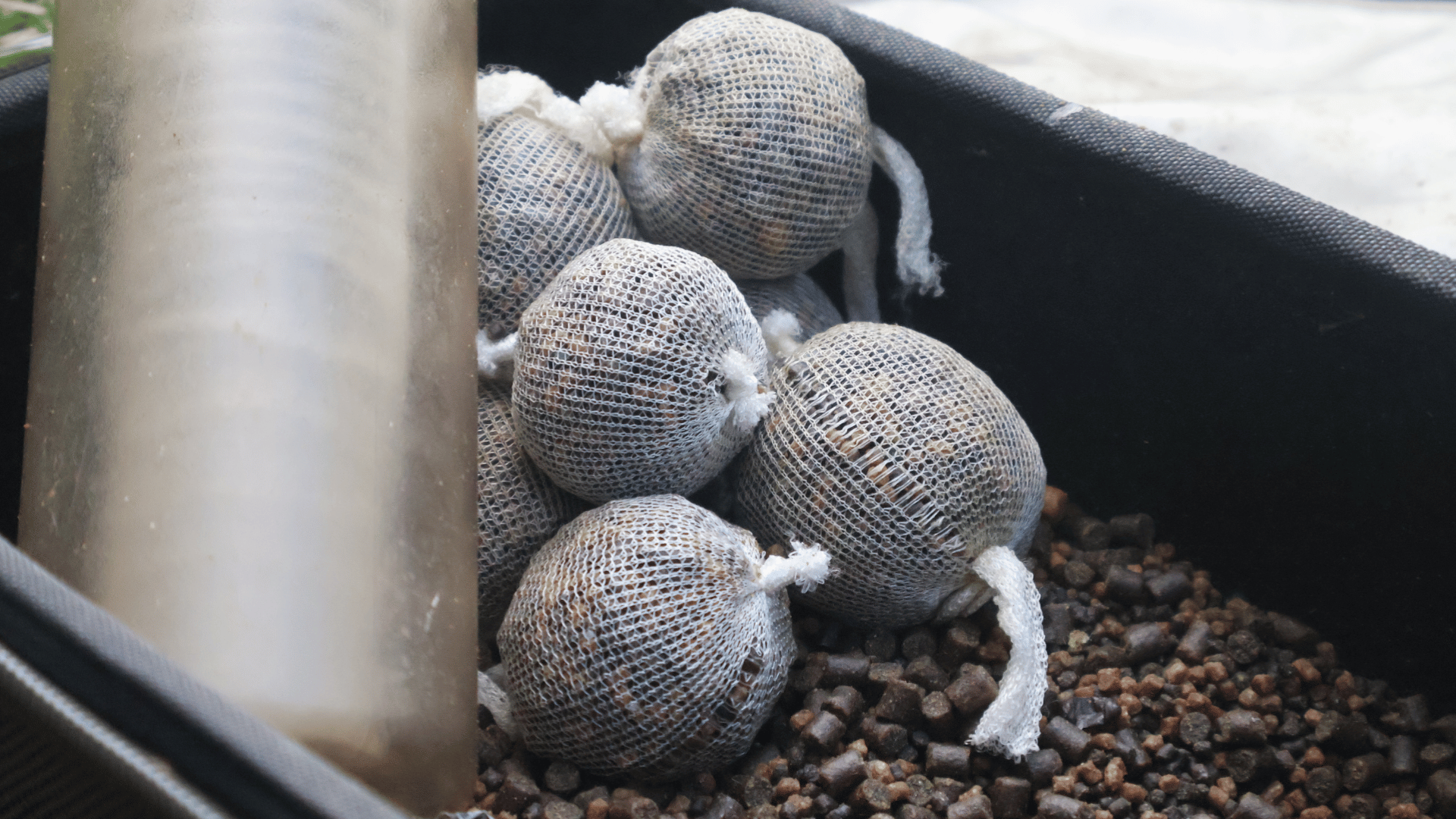
For the all important hookbait, I’ve always been a fan of fishmeal, especially in warmer conditions. Fish love fish, high protein, high food value. As many ‘attractor’ baits as i’ve tried, i’ve always caught better on something ‘fishy’ than ‘punchy’. For that reason, today I’m using a 16mm krill boilie, and all I take is a pot full, removing the temptation to heave them in.
That’s it from a bait perspective. If it seems simple that’s because it is, and the word that always goes with ‘simple’ is ‘effective’. So many anglers think more is better and complex catches more fish. This couldn’t be further from the truth.
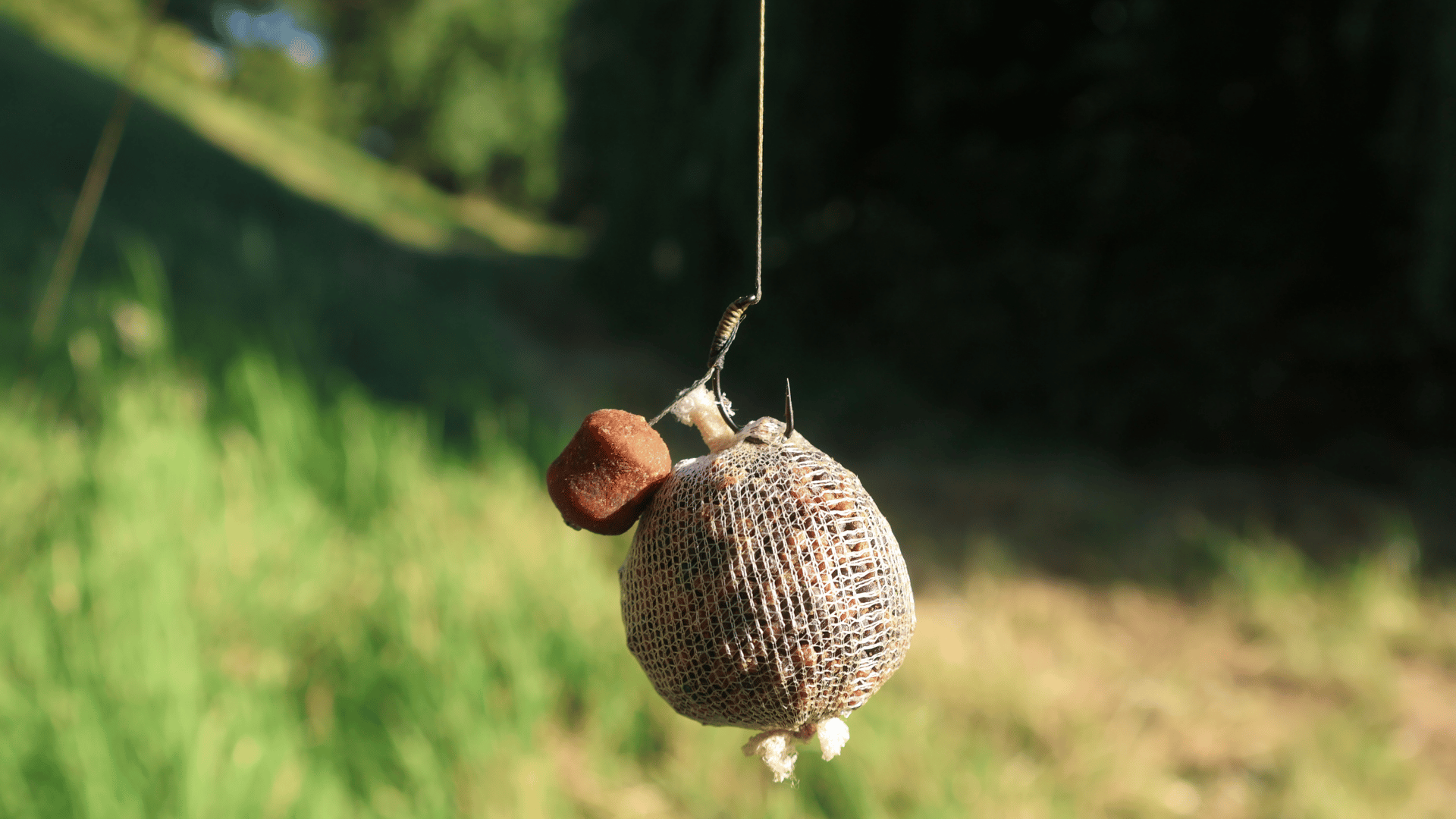
PUTTING IT INTO PRACTICE
For today’s session I thought I would try to sneak a tench. Living a stone’s throw from the River Welland in Spalding and the surrounding Coronation Channel means these are a great option for a summer evening. I can be fishing in minutes and home just as fast and I’ve previously caught tench to over 8lb in short sessions such as these. Heading out at 7 in the evening, the plan is to be back by 10, 11 at the latest (and sometimes I actually mean it!).
If you’re not using time to increase your chances then location becomes all important and swim choice is paramount. As mentioned I’m using very little bait and we’re not fishing long enough to draw fish to us, so we need to be casting pretty close to where they live. Watercraft and knowing the right features to look for can be key but there’s also no substitute for experience and knowledge.
On what is mostly a straight river I’ve headed for what is a very slight ‘S’ bend. These can be fantastic fish holding spots on otherwise straight runs as food can gather in the bends and slacks are created in the margins away from the main flow when the water is up. Throw in a shady overhanging tree and we’re on to a winner.
NO MARGIN FOR ERROR
For me, there is no better feature on any menu than the nearside margin, whether that’s on a river or a lake. Too many anglers have been conditioned with what I like to call ‘over there syndrome’. As if casting a long way and more towards the other bank than your own constitutes ‘real’ fishing.
By fishing at your feet you’re going to be able to guarantee several things; a clear bottom, accurate baiting and, in some cases, the presence of your target species. If you can put these three things together, catching is a near certainty, and that’s exactly what you need with so little time on the bank. Today I’m fishing no further than 2ft from the bank, on a deep gravel spot that offers both shade from an overhanging tree and a clean bottom to present my rig.
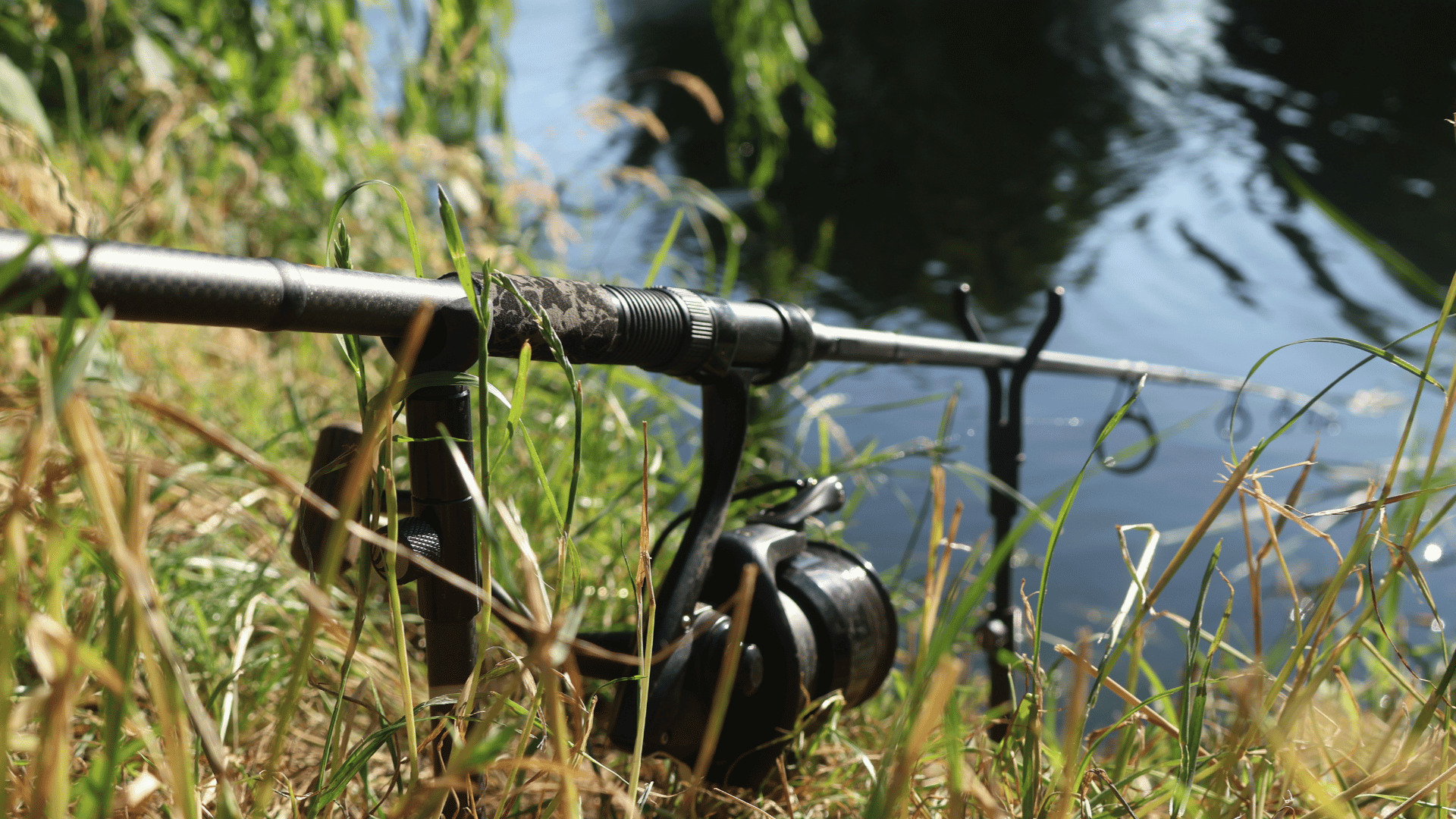
All of the tactics and preparation are for nought if you scare the fish away so it pays to be careful. Set up well back from the bank, dress in drab clothing and, when you’re ready, creep down, slide your bankstick in as quietly as possible, then lower your rig in. You can’t be too far away when you get a bite but sit well back and preferably behind cover. Time to sit, wait and be quiet.
With these tactics don’t be tempted to recast if there’s no action. The aim here is to cast once and catch once. I work on a couple of key principles here to remove the temptation;
- If I’m recasting my bait isn’t in the water
- If it isn’t in the water I absolutely can’t catch
- If I’ve had no indication there’s still bait left
- The only reason to cast is in my head
Don’t get me wrong, this mindset took years of practice and lots of failure!
As if magically timed to dispel the fear the clutch starts buzzing and the rod bends round. At this range with a heavy lead the bites are always fierce no matter what the species. With beefy tackle the fight isn’t prolonged. For better or worse I’ve never been an angler who’s in it for the joy of the fight, fishing light to ‘feel it’ more. For me all this does is prolong the stress for the fish and increase the chances of losing them. I’m a specimen hunter and the goal is to catch them, not play with them.
After a short fight and a few lunges the fish is in the net and it’s exactly what we’ve been after. A dark green tench sits resting in the folds of the net. Job done. It isn’t a huge fish but incredibly welcome on a hot day. A quick photograph and it’s back in the net and soon away to its watery home to reconsider its choices. For myself, I’m satisfied and it’s back to the car for the short journey home.
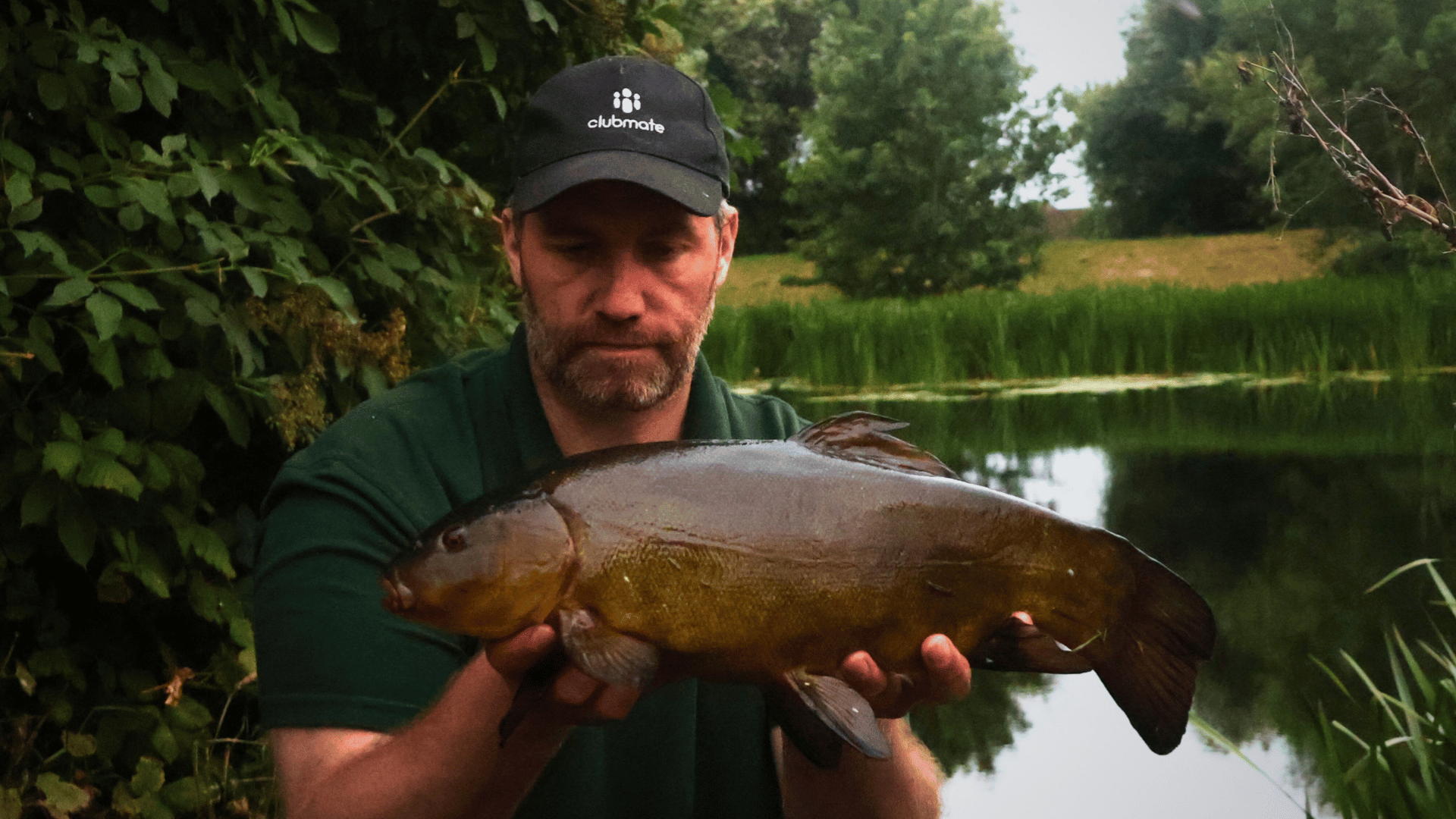
CUT DOWN, GET OUT AND GIVE IT A GO!
Think of this as the angling version of slimming down for the summer swimsuit. The quicker and more adaptable you can be, the more success you’re likely to have. There’s a time for lots of kit and plenty of bait but this isn’t it.
With a few simple tactics and the confidence to use them, you too can be slipping the net under some specimens this summer. Leave the rest of the gear at home, go back to basics and give it a try!
If you catch something special, get in touch and submit a catch report

